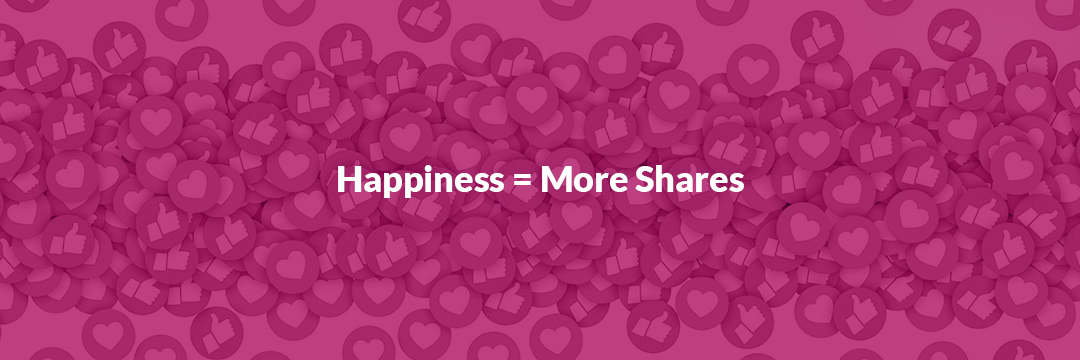We as humans, cannot help but experience all kinds of emotions. It’s in our nature. That’s why emotional marketing is so effective. When it comes to marketing, emotional campaigns prove to be a secret weapon for getting into the hearts and minds of prospective customers.
Below are a few other reasons as to why Emotional Marketing works:

How to increase your market reach
Scientists have found that positive emotions are more likely to convince us to share, tag our friends or retweet something, than negative emotions.
This means that marketers can improve their brand reach simply by highlighting positive content or using words that appeal to the “happy” part of the brain, such as:
- Delighted
- Ecstatic
- Satisfied
- Cheerful
- Elated
Sadness = More Clicks
Research has found that words with negative connotations lead to higher click-through rates an Outbrain study found that negative words like “worst” or “never”, work 30% more than a headline without a superlative when it comes to grabbing attention.
It was also found that negative words had a 63% higher click-through rate than their positive counterparts. What’s more, positive words such as “best” were significantly less appealing to audience members.
Which emotion works?

If you have a look in any dictionary or thesaurus, you’ll find hundreds of words that describe our different emotions that we experience every day. Such as surprise, excitement, empathy. So how do you know which emotions to use in your strategy around those feelings?
And how do you combine all of those elements into an effective emotional marketing strategy?
The good news is that it’s simpler than you think
In 2014 the institute of Neuroscience and Psychology found that all human emotions are based on our four feelings. Happiness, Sadness, Fear/Surprise and Anger/disgust with those four options in mind, let’s take a look at how you can use emotional appeal in your marketing campaigns to drive the results you want.
Happiness
Every single brand want’s its products to be associated with happy, smiling customers. As mentioned above, positivity has a knack for increasing engagement and shares.
A study conducted in 2010 covering the most-emailed New York Times articles, discovered that emotional articles received the most shares, and positive posts got more attention than negative ones.
Sadness
If all brands want their customers happy and smiling why bother with other emotions? Well, the simple answer is that different emotions drive different results. Only in recent years have companies realized the value of emotional marketing to provoke a type of emotion that drives a certain result.
If you provoke sadness in your customer base and promise them that you have the solution to do something about their negative feelings, they are more likely to act.
Fear/Surprise
Fear is what keeps us alive, it’s in our instinct and something that we all experience from time to time. In the world of emotional marketing, fear prompts people to act through urgency and a desire for self-preservation.
For marketing agencies or professionals, fear proves to be a far more complex emotion to work with than sadness or happiness. If fear is overwhelmingly present in your campaign it might anger your audience, if not used correctly.
Anger/Disgust
While most companies assume that it’s best to avoid angering their customers, this negative emotion can have a powerful impact in the right circumstances. Emotional marketing strategies that use feelings of anger and disgust can shake people out of their stupor and into action.
When we see an injustice in the world that we want to change, we’re driven to do something about it.

